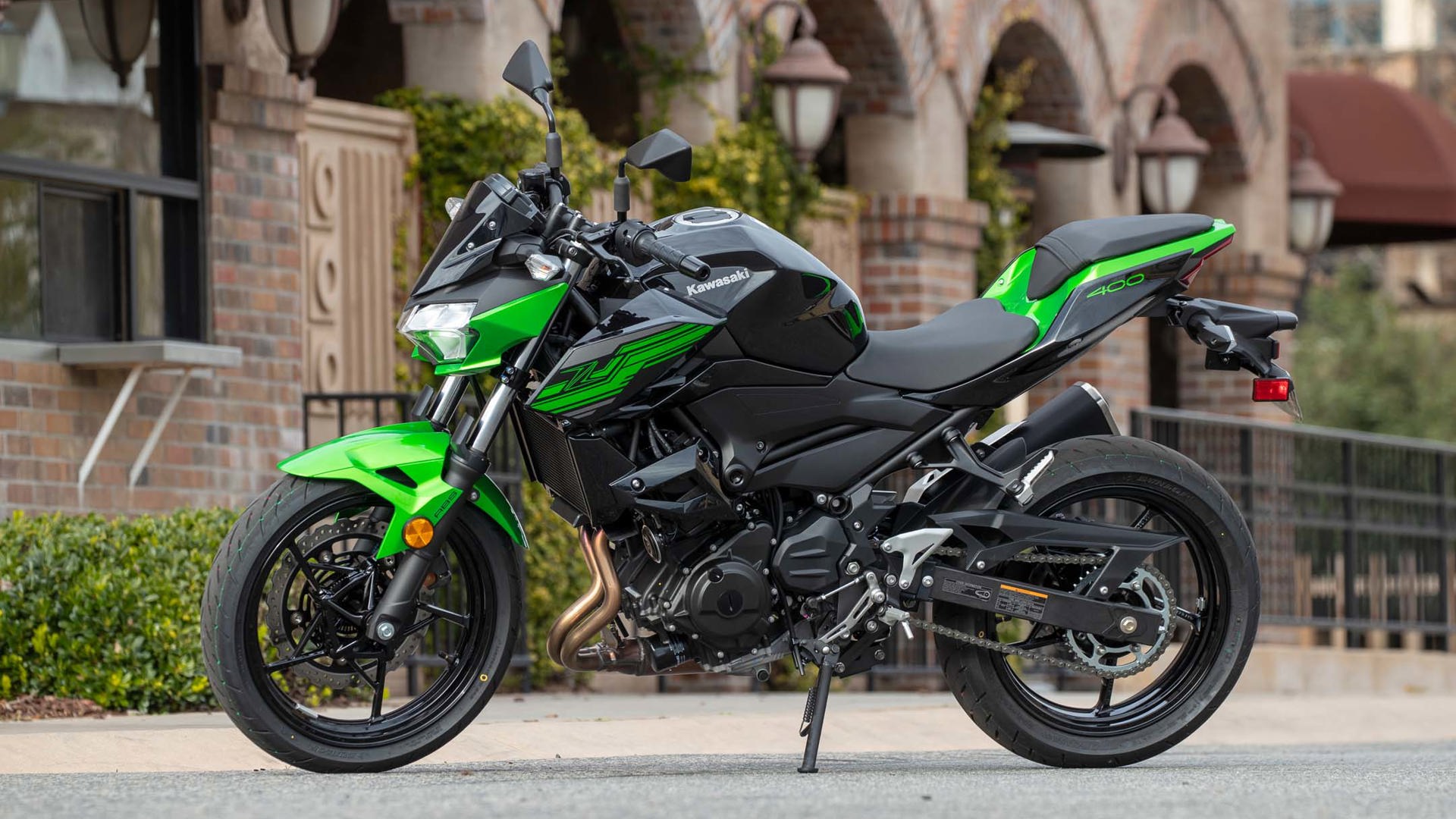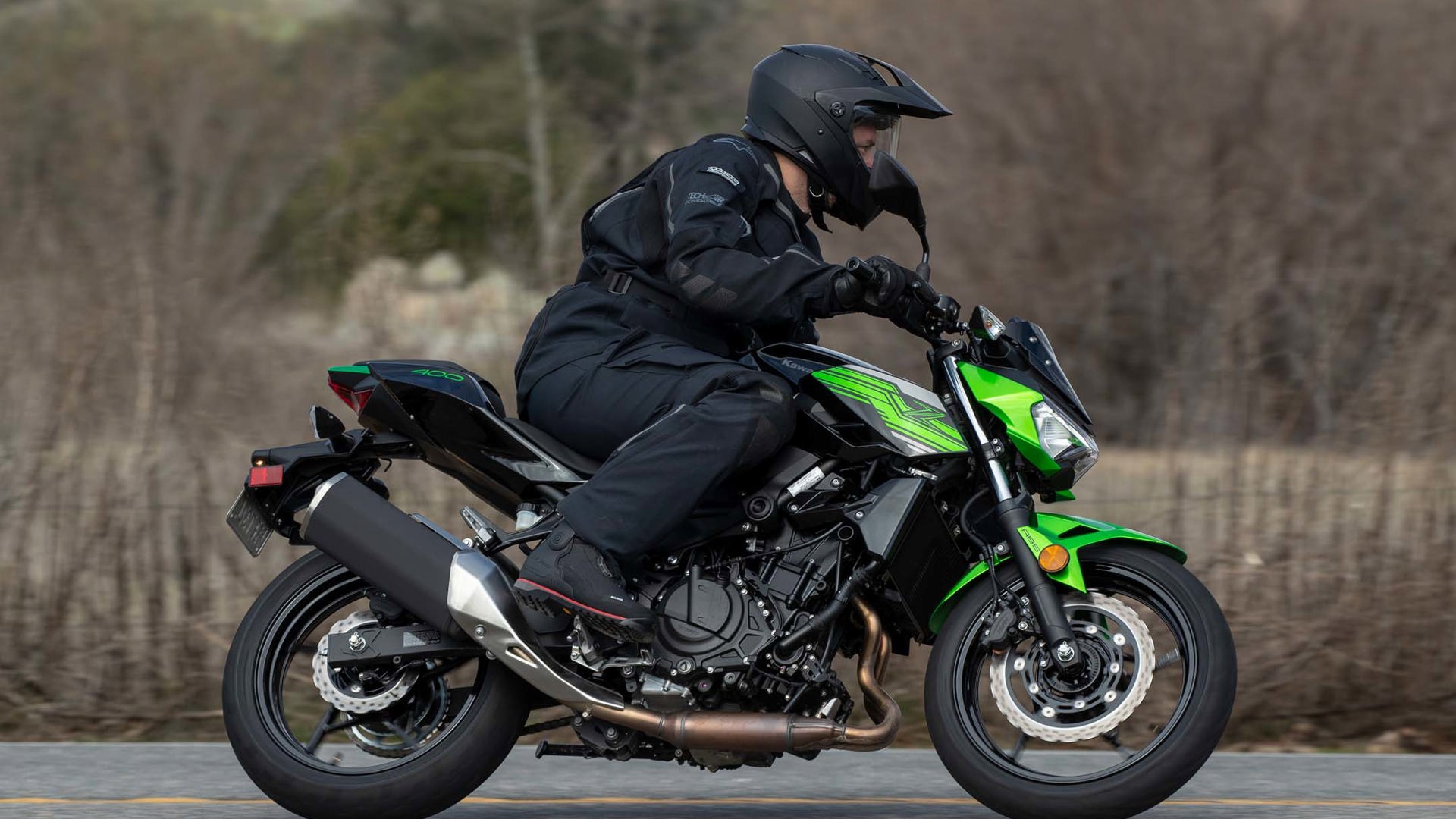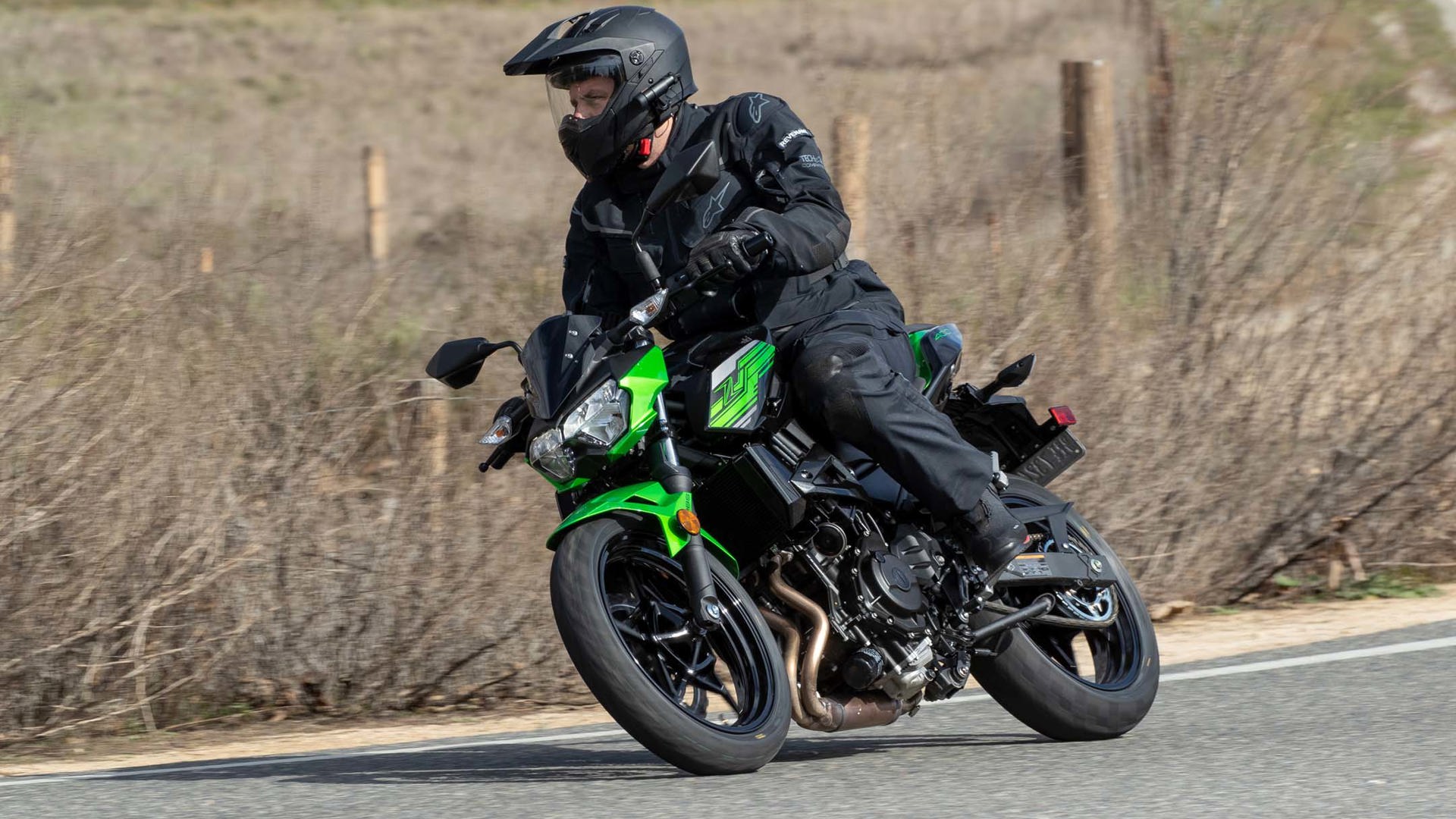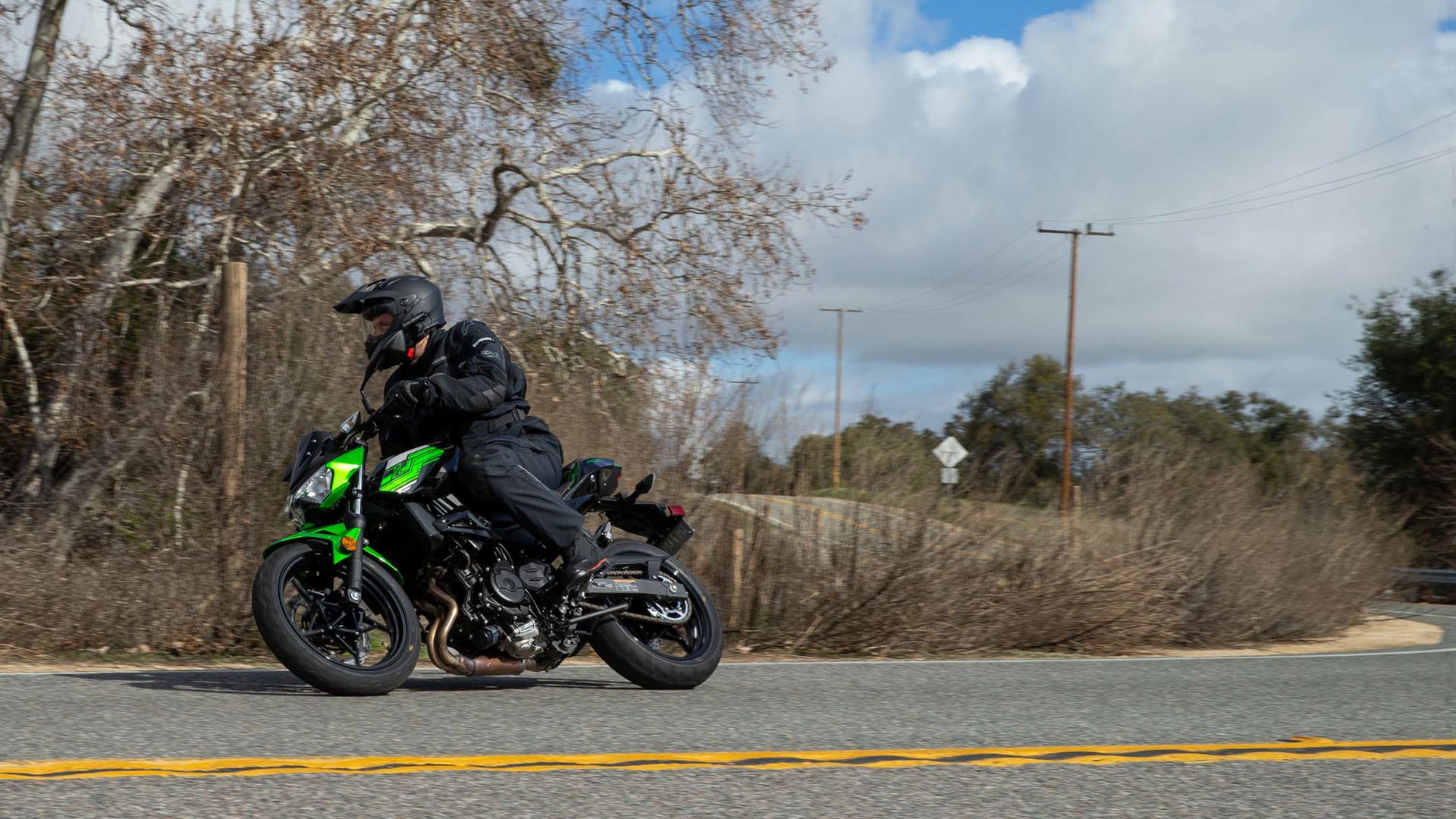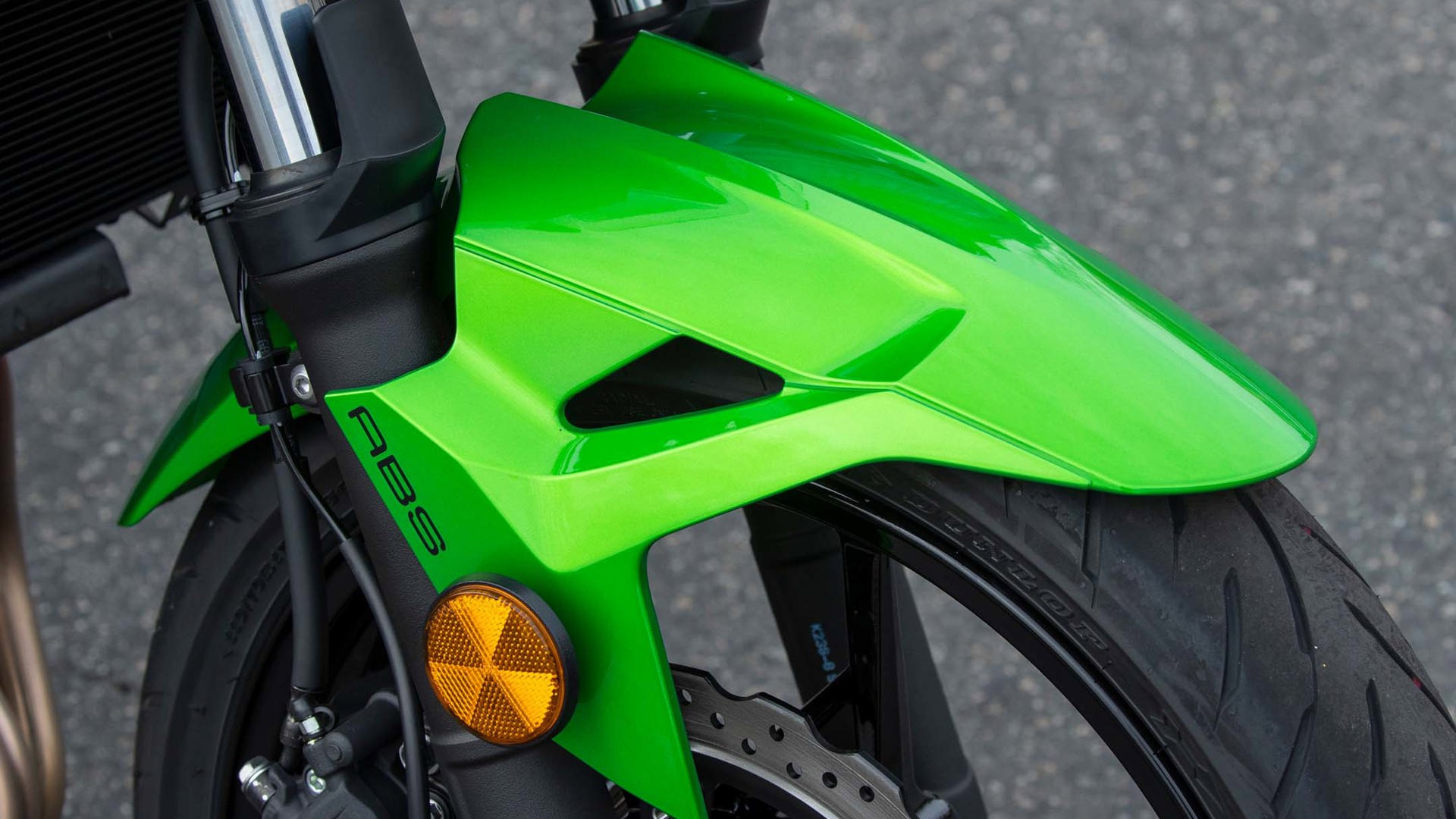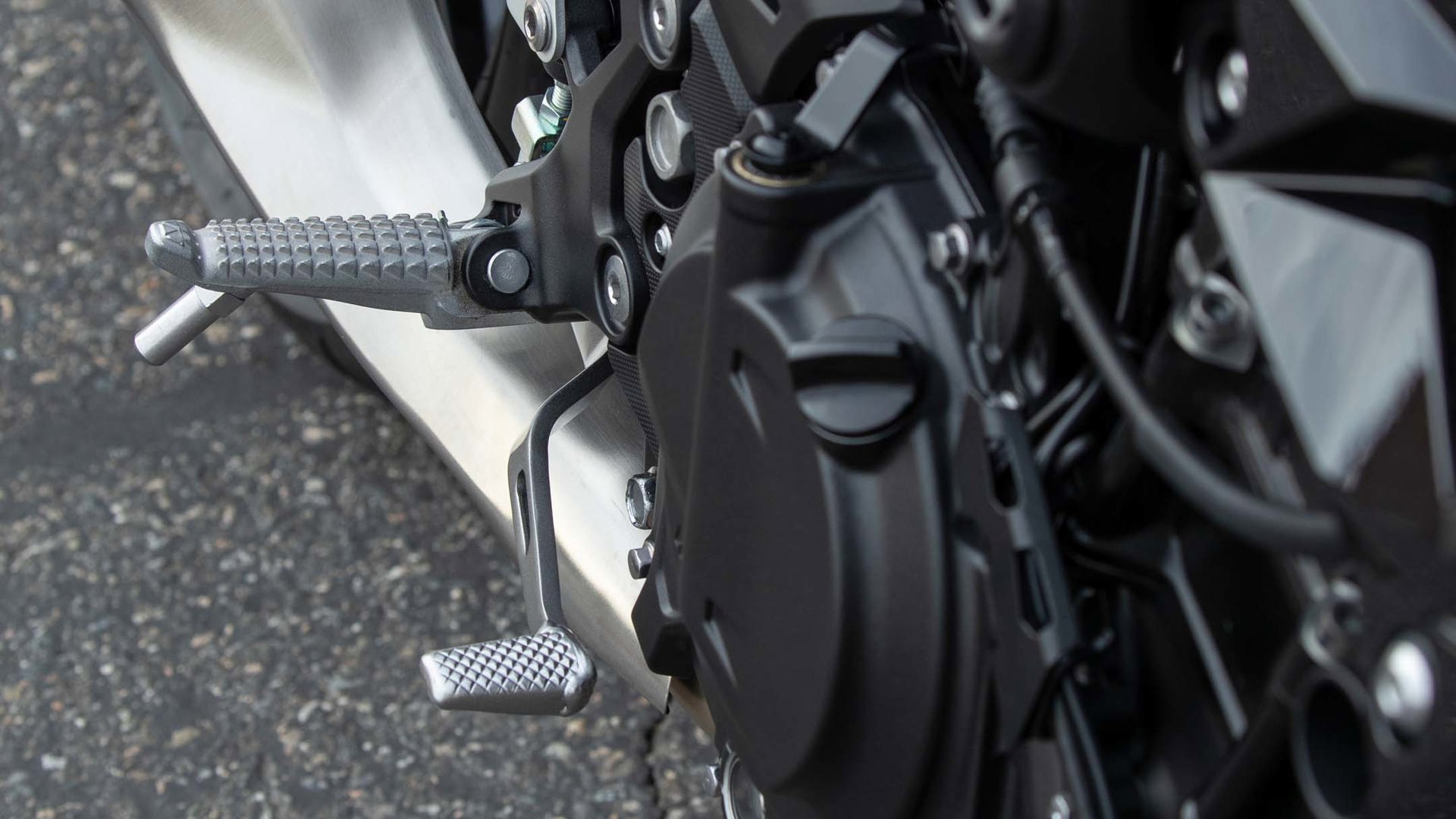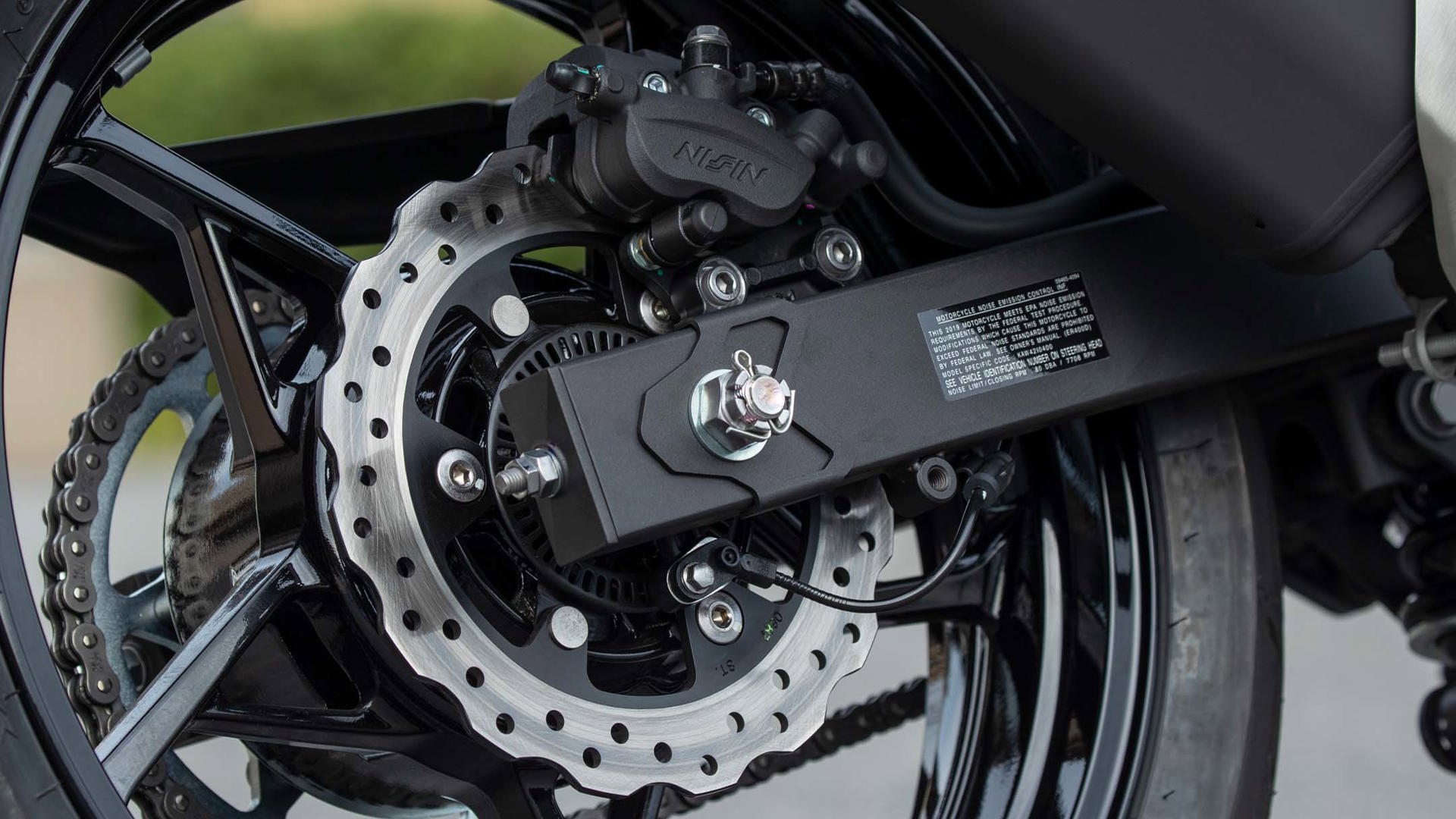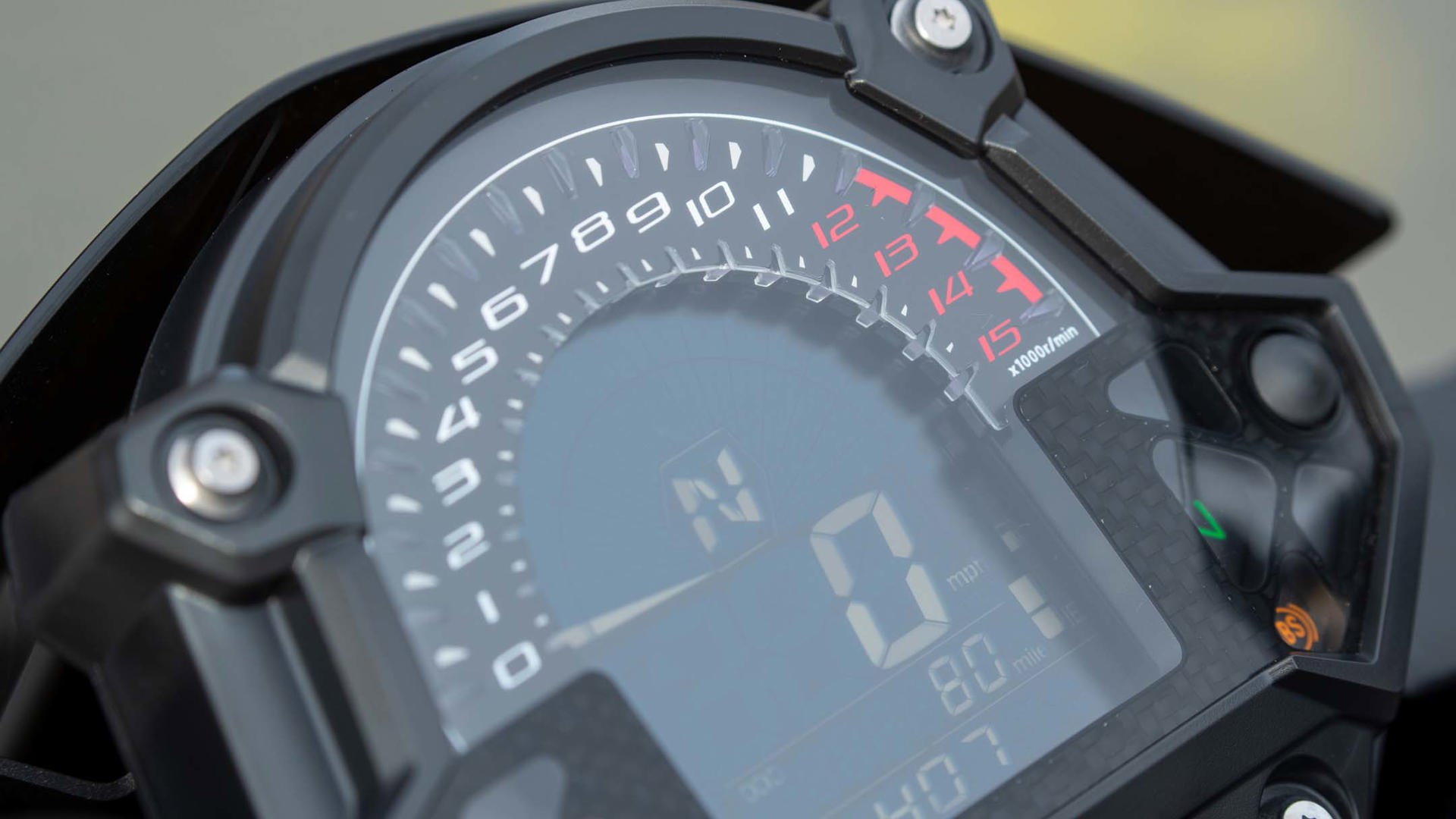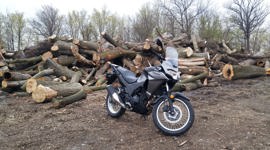MURRIETA, CA – The Kawasaki Z400 is the latest entry in a long, long line of beginner-friendly motorcycles from Team Green. Don’t be fooled by the smallish engine, or the low price tag – this is a legit motorcycle, and offers real value for the Canadian rider who doesn’t need to hit hyperspeed on the superslab.
Kawasaki officially introduced the Z400 at the 2018 EICMA show. It’s based off the Ninja 400 motorcycle, just as the previous Z300 was based off the Ninja 300. Most major components – the chassis, the engine, and much of the bodywork (tail section, seat, tank) – are the same pieces used on the sportbike version.
As a result, the stuff that made the Ninja 400 instantly popular also works very well for the Z400. Kawasaki claims the 399 cc liquid-cooled parallel twin makes 44 hp at 10,000 rpm, and 28 lb-ft of torque at 8,000 rpm. Like the Ninja 400, the Z400 uses a trellis frame, with a bolt-on plate mounting the swingarm directly to the back of engine. Kawasaki says this arrangement reduces weight (167 kg at the curb) while stiffening the chassis.
Of course, the Z400 lacks the Ninja’s full fairing, going with sensible, minimalist bodywork up front, and none of the garish excesses that have popped up on naked bikes in recent years. To me, the six-pot LED headlight (dual marker lights, low beams, high beams) is reasonably attractive, something I haven’t said about many Kawasaki naked bikes (although they’re getting better). Overall, the bike’s styling is supposed to show off Kawi’s “Sugomi” design philosophy, giving you the visual impression of a crouched predator about to strike its prey. Does it work? I’m not sure, but it avoids the pitfalls of over-aggressive design and normcore boring visuals.
There’s a standard handlebar, mounted higher and closer to the rider than the Ninja’s clip-ons. The suspension is also slightly revised from the Ninja 400’s spec, with softer spring rates for bumpy public roads. The front forks are non-adjustable, but there’s five-way spring preload adjustability in the rear. Kawasaki says the shock is adjustable with the onboard toolkit, and from what I could see, it looked like a very easy-to-access arrangement, much superior to the tucked-away adjustments that you see on so many monoshock arrangements.
In preparation for the ride, I had three major questions about the bike: would the bike fit me, would the engine have enough power for real-world usage, and would the suspension and chassis hold up to backroad riding? Previous experiences on budget beginner bikes from a variety of manufacturers had generally left me feeling a bit cramped at ride’s end, wishing for a bit more highway power, and the suspension had almost always underwhelmed me when it came to bumpy backroad or urban riding.
I got my answers over the day’s ride, starting with the engine. Rolling out from the parking lot onto a busy California city street, there was no need for frenzied shifting, no unpleasant engine buzz, no frantic scanning for incoming cars that gained on me as I failed to pick up speed. The Z400 is actually quite pleasant to ride in urban traffic; although it makes its power higher in the rev range, there’s still enough torque down low to comfortably navigate hectic traffic without feeling like the handlebars are about to rattle off.
Heading into the deserted rural two-laners, the engine continued to impress. It has more than enough power to hustle through the countryside, as long as you keep it on the boil. I found myself usually running between third and fourth gear in the more open twisties, running up to fifth or sixth on the straights. To be sure, you want to pick the right gear for max take-off velocity out of the corners, but the power’s there when you need it as long as you’re running the shifter like you’re supposed to.
Speaking of which – as you’d expect, the Z400’s transmission is excellent, no false neutrals and an extremely light clutch pull, thanks to the assist-slipper clutch, which also helps if you make a clunky downshift at the wrong time. I’ve ridden far more expensive motorcycles with far worse gearboxes. This is something we expect from the Japanese manufacturers, but really, we don’t give them enough credit for it. Or maybe we just don’t throw enough shame at the competition? Either way, the bike’s six-speed tranny is perfectly mated to the engine.
Once the speed picks up in open straight stretches, the engine’s limitations become more apparent. At 100 kg, I was probably the largest guy in my group, and with the engine wrung out, I found it hard to accelerate as quickly as my more svelte counterparts. However, it pulled all the way to an indicated 85 mph (140 km/h), and there was still power left on tap. At this speed, the handlebars did get a tad buzzy (which explains why Kawasaki installed bar-end weights), but for a 400-class machine, everything was extremely civilized.
At no point would you ever mistake this engine for one of the more brap-happy offerings from Europe, but in the real world, it’s more than enough. Although it doesn’t come with electro-trickery like traction control, it doesn’t need it. I rode on a considerable amount of sketchy road, with water and sand across the lane, and a sensible throttle hand was all that was needed to stop things from going sideways. The power delivery was smooth, and although the engine has that cheap-sounding parallel twin rattle at idle, there’s a very tasty howl from the intake when you’re at speed. All in all, lots to like, and no real complaints.
So Kawasaki built a proper engine, but would the chassis and running gear match? In the presentation, Kawasaki’s reps talked up all the tuning put into the Z400’s suspension; I was skeptical, but found this one of the most comfortable backroad bikes I’ve ridden in quite some time. The front end (Showa 41 mm fork) went exactly where I wanted it to, with no vagueness or reluctance, even on bad roads. The Kayaba shock at the back kept the rubber planted without delivering spine-compressing impacts, and with no wallowing. It just plain worked.
When heeled over on sharper corners, there were a couple of spots where the forks did transmit a good bit of chatter back into the handlebars, but they stayed well planted for me, with no unpleasant twitching. The only real gripe I had was the amount of dive under braking, but that was probably partly because I’m a heavier rider. For the mix of all-round riding I did, I thought the suspension worked extremely well, although its limitations would likely show up if you decided to take the bike to a track.
Same goes for the brakes – they weren’t what I’d call impressive, but they certainly got the job done on the street, although you want to use both front and rear if you really want to slow down in a hurry. ABS is standard (courtesy of Nissin), although the 310 mm front disc and 220 mm rear are civilized enough that only a panicky noob would lock them up. I did feel like the front brake got a little mushy when I started using it off-and-on quite a bit in traffic, but if you were worried about that sort of thing, you could probably upgrade components for something like a track day.
Overall, the decent brakes and compliant suspension were a great combination with the sporty frame (short wheelbase, long swingarm) and reasonably light weight. Once I felt comfortable behind the handlebars, I was having a great time in the corners. On the first sections of the ride, I felt like I was just getting up to speed after a winter without riding, but by day’s end, I was wishing I could keep exploring the bike’s limits (and my own) in the twisties. I wished the wide handlebar was set a little closer to me, for a more upright riding position, but it still allowed easy turn-in (the Dunlop radials helped with that too). If you’re an experienced rider, this really is a bike you can have lots of fun hustling along, with little worry of pushing it too hard.
And finally: was the bike “big enough” for me? At the end of the day, the answer was yes. Although entry-level bikes are often said to be aimed at smaller riders, my 6-foot, 100 kg carcass didn’t feel the least bit cramped. When you ride the Z400, you know you’re aboard a compact motorcycle, but not so small that it’s a problem. And not only did the bike have a reasonably comfortable seating position, but I also thought the flyscreen did a fairly good job of re-directing windblast on the highway.
Kawasaki seems to have a fairly realistic idea of what will interest customers with this bike, both budget-minded commuters, and beginner riders. Most experienced riders won’t view it as an aspirational machine, because while it can wheelie, it doesn’t beg to do so, and while it’s reasonably attractive, it doesn’t have the in-your-face visuals found on other naked bikes, if that’s what you’re into.
However, it’s still enough bike for anyone to have fun with, especially if you’re on back roads. Not only is it $400 cheaper than the Ninja 400, insurance should also be more affordable. For those two reasons, I think the Z400 will make an impact on the market, particularly in urban areas. If Kawasaki had given it more neo-retro, cyberpunk style, I think sales would be even bigger, but for whatever reason, Team Green isn’t building anything like that yet.
Keeping the styling close to the Ninja 400 allows Kawi to keep prices down, though, and at $5,799 MSRP, the Z400 is $1,200 less than Husqvarna’s 401 Vitpilen and Svartpilen, and about the same as the KTM 390 Duke. Honda’s CB300F ($5,099) and CB300R ($5,499) both come in at less money, but are far less motorcycle – the Kawasaki compares more closely to the CB500F ($7,099).
Add in the fact that a lot of the aftermarket bits for the Ninja 400 will also fit the Z400, and you’ve got a bike that can be bought on the cheap and upgraded for track usage, or even for touring. That could be enough to interest buyers into a long-term relationship, and if that happens, I think this bike is even more of a winner. As it is, it exceeded my expectations, and I expect buyers will find the same once it hits showrooms.
